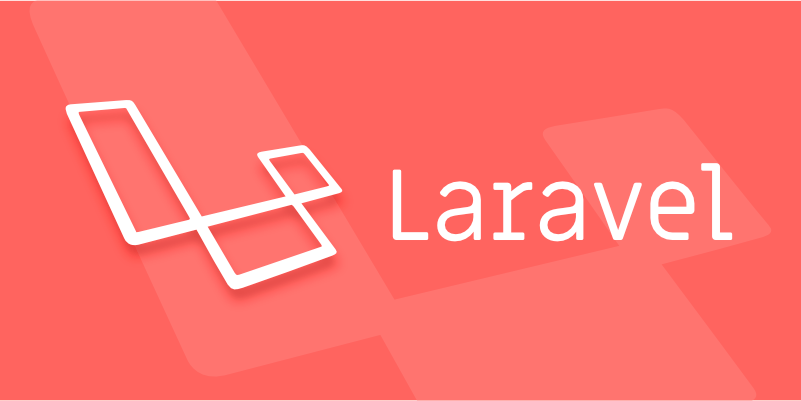Laravel's Form Model Binding is a feature implemented through the laravelcollective/html package that automatically fills model data into form fields. 1. You need to install the package and configure the service provider and facade first; 2. Use Form::model() to bind model instances in the Blade template; 3. The form field name must be consistent with the model attributes for automatic filling; 4. Pay attention to closing the form and using the HTTP method correctly; 5. Applicable to editing scenarios, and you can pass empty models when creating; 6. It is more concise than native HTML and reduces the risk of missing backfill logic, but it is not applicable in Livewire or Inertia.js.

Of course, Laravel's Form Model Binding is a very practical feature, especially when dealing with form editing scenarios, which can greatly simplify code and reduce duplicate logic. Next I will directly talk about the key points and usage methods.

What is Form Model Binding?
Form Model Binding is a feature provided by the laravelcollective/html extension package in Laravel. It allows you to bind a model instance in the form, so that the corresponding value will be automatically filled when rendering the form field.

For example, if you have a user editing page, you don’t need to manually set the value of the input box one by one, it will automatically match according to the model.
How to install and configure
If you are using the newer Laravel version (8), you need to install this package first:

composer requires laravelcollective/html
Then add in the providers array of config/app.php :
Collective\Html\HtmlServiceProvider::class,
And add two facades in aliases :
'Form' => Collective\Html\FormFacade::class, 'Html' => Collective\Html\HtmlFacade::class,
After this step is completed, you can start using it.
How to use it in Blade templates
Suppose you are editing a user information page and the controller has passed in the $user instance.
You can write this way:
{!! Form::model($user, ['route' => ['users.update', $user->id], 'method' => 'PUT']) !!}
{{ Form::text('name') }}
{{ Form::email('email') }}
{{ Form::submit('Update') }}
{!! Form::close() !!} The key here is Form::model() method, which binds the model. Each field after that will automatically fill the value as long as the name corresponds to the model attribute.
Frequently Asked Questions and Notes
- The field name must be consistent with the model attribute : otherwise it will not be automatically filled.
- Avoid field conflicts : An error may occur if the field name is duplicated with the key in the form request.
- Remember to close the model binding : use
Form::close()or end the!!}tag. - The POST/PUT/PATCH method should be used in conjunction with the routing method : for example, the update operation should be used
method="PUT"and withRoute::put().
If you also want to use this syntax when creating new data, you can pass an empty model in:
$user = new App\Models\User(); Form::model($user, ...)
What is the difference between it and ordinary forms?
Compared to writing HTML forms directly:
<input type="text" name="name" value="{{ old('name', $user->name) }}"> Using Form Model Binding is more concise and it is not easy to miss old() backfilling logic. Especially when there are many fields and data echoes after verification failure, the advantages are more obvious.
However, if you are using Laravel Livewire or Inertia.js, you may not need to use this package because they have their own form state management methods.
Basically, that's not complicated but it's easy to ignore details. For example, forgetting to bind the model or the field name doesn't match, will cause the data to not be displayed.
The above is the detailed content of Using Form Model Binding in Laravel?. For more information, please follow other related articles on the PHP Chinese website!

Hot AI Tools

Undress AI Tool
Undress images for free

Undresser.AI Undress
AI-powered app for creating realistic nude photos

AI Clothes Remover
Online AI tool for removing clothes from photos.

Clothoff.io
AI clothes remover

Video Face Swap
Swap faces in any video effortlessly with our completely free AI face swap tool!

Hot Article

Hot Tools

Notepad++7.3.1
Easy-to-use and free code editor

SublimeText3 Chinese version
Chinese version, very easy to use

Zend Studio 13.0.1
Powerful PHP integrated development environment

Dreamweaver CS6
Visual web development tools

SublimeText3 Mac version
God-level code editing software (SublimeText3)

Hot Topics
 What are routes in Laravel, and how are they defined?
Jun 12, 2025 pm 08:21 PM
What are routes in Laravel, and how are they defined?
Jun 12, 2025 pm 08:21 PM
In Laravel, routing is the entry point of the application that defines the response logic when a client requests a specific URI. The route maps the URL to the corresponding processing code, which usually contains HTTP methods, URIs, and actions (closures or controller methods). 1. Basic structure of route definition: bind requests using Route::verb('/uri',action); 2. Supports multiple HTTP verbs such as GET, POST, PUT, etc.; 3. Dynamic parameters can be defined through {param} and data can be passed; 4. Routes can be named to generate URLs or redirects; 5. Use grouping functions to uniformly add prefixes, middleware and other sharing settings; 6. Routing files are divided into web.php, ap according to their purpose
 What are policies in Laravel, and how are they used?
Jun 21, 2025 am 12:21 AM
What are policies in Laravel, and how are they used?
Jun 21, 2025 am 12:21 AM
InLaravel,policiesorganizeauthorizationlogicformodelactions.1.Policiesareclasseswithmethodslikeview,create,update,anddeletethatreturntrueorfalsebasedonuserpermissions.2.Toregisterapolicy,mapthemodeltoitspolicyinthe$policiesarrayofAuthServiceProvider.
 How do I create new records in the database using Eloquent?
Jun 14, 2025 am 12:34 AM
How do I create new records in the database using Eloquent?
Jun 14, 2025 am 12:34 AM
To create new records in the database using Eloquent, there are four main methods: 1. Use the create method to quickly create records by passing in the attribute array, such as User::create(['name'=>'JohnDoe','email'=>'john@example.com']); 2. Use the save method to manually instantiate the model and assign values ??to save one by one, which is suitable for scenarios where conditional assignment or extra logic is required; 3. Use firstOrCreate to find or create records based on search conditions to avoid duplicate data; 4. Use updateOrCreate to find records and update, if not, create them, which is suitable for processing imported data, etc., which may be repetitive.
 How do I run seeders in Laravel? (php artisan db:seed)
Jun 12, 2025 pm 06:01 PM
How do I run seeders in Laravel? (php artisan db:seed)
Jun 12, 2025 pm 06:01 PM
Thephpartisandb:seedcommandinLaravelisusedtopopulatethedatabasewithtestordefaultdata.1.Itexecutestherun()methodinseederclasseslocatedin/database/seeders.2.Developerscanrunallseeders,aspecificseederusing--class,ortruncatetablesbeforeseedingwith--trunc
 What is the purpose of the artisan command-line tool in Laravel?
Jun 13, 2025 am 11:17 AM
What is the purpose of the artisan command-line tool in Laravel?
Jun 13, 2025 am 11:17 AM
Artisan is a command line tool of Laravel to improve development efficiency. Its core functions include: 1. Generate code structures, such as controllers, models, etc., and automatically create files through make: controller and other commands; 2. Manage database migration and fill, use migrate to run migration, and db:seed to fill data; 3. Support custom commands, such as make:command creation command class to implement business logic encapsulation; 4. Provide debugging and environment management functions, such as key:generate to generate keys, and serve to start the development server. Proficiency in using Artisan can significantly improve Laravel development efficiency.
 How do I install Laravel on my operating system (Windows, macOS, Linux)?
Jun 19, 2025 am 12:31 AM
How do I install Laravel on my operating system (Windows, macOS, Linux)?
Jun 19, 2025 am 12:31 AM
Yes,youcaninstallLaravelonanyoperatingsystembyfollowingthesesteps:1.InstallPHPandrequiredextensionslikembstring,openssl,andxmlusingtoolslikeXAMPPonWindows,HomebrewonmacOS,oraptonLinux;2.InstallComposer,usinganinstalleronWindowsorterminalcommandsonmac
 How do I define methods (actions) in a controller?
Jun 14, 2025 am 12:38 AM
How do I define methods (actions) in a controller?
Jun 14, 2025 am 12:38 AM
Defining a method (also known as an action) in a controller is to tell the application what to do when someone visits a specific URL. These methods usually process requests, process data, and return responses such as HTML pages or JSON. Understanding the basic structure: Most web frameworks (such as RubyonRails, Laravel, or SpringMVC) use controllers to group related operations. Methods within each controller usually correspond to a route, i.e. the URL path that someone can access. For example, there may be the following methods in PostsController: 1.index() – display post list; 2.show() – display individual posts; 3.create() – handle creating new posts; 4.u
 How do I run tests in Laravel? (php artisan test)
Jun 13, 2025 am 12:02 AM
How do I run tests in Laravel? (php artisan test)
Jun 13, 2025 am 12:02 AM
ToruntestsinLaraveleffectively,usethephpartisantestcommandwhichsimplifiesPHPUnitusage.1.Setupa.env.testingfileandconfigurephpunit.xmltouseatestdatabaselikeSQLite.2.Generatetestfilesusingphpartisanmake:test,using--unitforunittests.3.Writetestswithmeth






